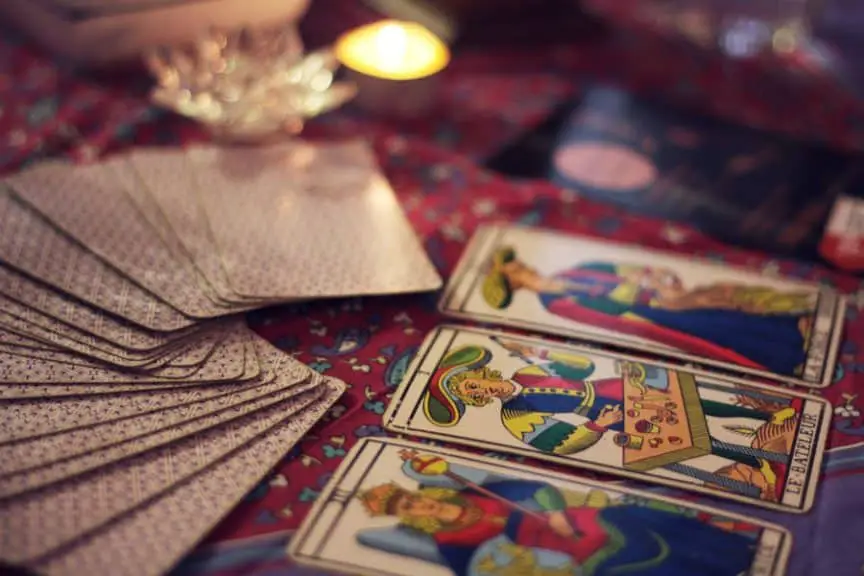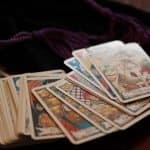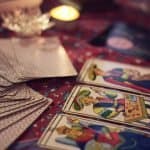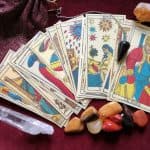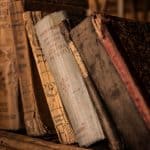There are many theories about the origins of tarot cards, ranging from their creation by a mysterious priesthood in order to protect secret knowledge, to simple and meaningless cards used for entertainment in Europe in the 14th century.
The purpose of this article is to examine only the historical facts, combined with the background of the esoteric evolution of each period.
- How their symbolism came into being?
- When did it begin to be a form of fortune-telling?
- Is there continuity of structure?
- Is there a consistency of symbolism?
- Who was, most likely, the inventor of the first deck that we could recognize as Tarot?
Let’s draw a comprehensive, timeline from the first time tarot cards appeared in Europe until nowadays. (If you want to study in detail the history of the Tarot, I strongly recommend the work of Helen Farley “A cultural history of Tarot – From entertainment to esotericism“(aff.link))
14th century
It is generally accepted that playing cards entered Europe in the last quarter of the fourteenth century. There are references to cards since 1370 but not before this.
The deck’s entry point was almost certainly through the prosperous Venice seaport, which conducted a brisk trade with the countries of the East and the Near East. By this time, the deck already had a fixed structure of fifty-two cards distributed through four suits.
It is possible that the original European tarot was created in order to amuse King Charles VI of France who had some psychological issues. It seems that the treasurer for King of France, Charles Poupart, in February 1392 made a payment for three gilt decks to Jacquemin Gringonneur.
Some years later, in Paris, an ordinance dated January 22, 1397, forbids working people from playing tennis, ball, cards, or ninepins except only on holidays.
Additionally,
- Johannes, (a German monk) describes a game called “Ludas Cartarum” played in the year 1377.
- Covelluzzo, a fifteenth-century chronicler, relates the introduction into “Viterbo” of the game of cards in the year 1379.
15th century
During the fifteenth-century Tarot cards were generally hand painted for the princely houses of Northern Italy and France. The increase in demand led to new techniques of reproduction like woodcuts, stencils, and copper engraving.
As a result, administrative documents from Northern Italian, indicate that there was an abundance of hand-painted decks produced in the fifteenth century.
A sermon against the cards from the 15th-century referred to the four suits and Major Arcana as two separate card types, so they may not have merged into one deck until later. It seems that some form of playing cards came to Italy through North Africa, but we don’t know if these were tarot.
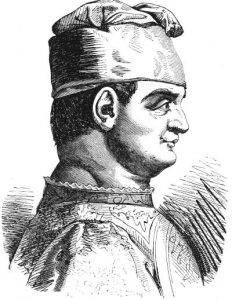
The oldest tarot deck in existence come from Milan and the first documentary evidence which mentions this deck appeared in the northern Italian city, Ferrara, in 1442.
It is the Visconti-Sforza deck which was hand-painted in the mid-fifteenth century and created at the time of the marriage of Bianca Maria Visconti, daughter of Filippo Maria Visconti, Duke of Milan, with Francesco Sforza, a professional soldier in 1441.
We don’t know if the deck was invented by Duke Filippo Maria Visconti or simply crafted for him. Some of the symbolism pictured in these cards were undoubtedly heraldic emblems that belonged to the Visconti and Sforza families.
There are twenty incomplete packs surviving. The earliest are from the area of Milan. The three of them which are the oldest and most complete are:
- The Visconti di Modrone pack named for a former owner is believed to be the oldest extant deck. Its structure differed markedly from the newer, standardized tarot decks so that it can be supposed that a regular form had not yet been established.
- The second deck made for Duke Filippo Maria Visconti is known as the Brambilla pack after a former owner and was thought to have been painted between 1442 and 1445. Of the trump cards, only the Emperor and the Wheel of Fortune have survived. This deck featured arrows rather than Batons on the court cards and imprints of Duke Visconti’s florin on the Coins suit.
- The third pack, known as the Visconti-Sforza deck, was painted for Francesco Sforza and his wife Bianca. It is the most recent and complete of the three decks. The Fool, nineteen trump cards, and fifty-four pip cards survive. The Devil and the Tower were missing from the trumps and six cards were obviously later additions. These were Temperance, Fortitude, the Star, the Moon, the Sun, and the World.
While the earliest tarot decks were Italian, French ones soon followed. One early deck that is still in use today is the Tarot de Marseilles, which is based on woodblock prints.
This has the familiar suits of Rods, Cups, Coins, and Swords depicted upon the cards, in addition to the court cards of the Minor Arcana and the strange trump cards of the Major Arcana
Do you want to learn more about Tarot? Check out our recommendations at “Tarot Bookshelf” and many free resources at our “Free Tarot Library”
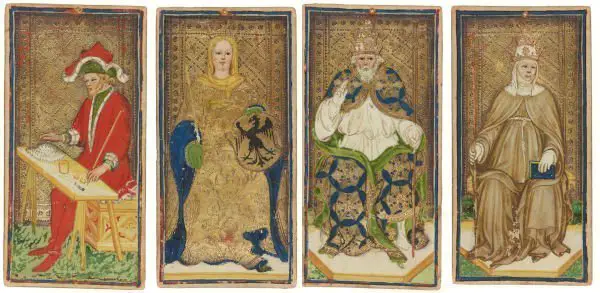
16th – 17th century
The Tarot de Marseille became the standard deck built by French and Swiss card manufacturers from around 1700 and probably took its definitive form near the beginning of the seventeenth century.
The deck was used exclusively for game purposes, and there was no indication that tarot cards or even regular playing cards were used for divination up to about four centuries after their first appearance.
True cartomancy, with which symbolic concepts were assigned to individual cards, was not apparent until the second half of the eighteenth century.
18th century
Main characters of this period were:
Antoine Court de Gébelin (1719–1784), the man who initiated the interpretation of the occult tarot, was a Protestant pastor and a Freemason.
He was a literary man of recognized rank, a dedicated scholar of many of the esoteric currents that permeated French culture including Rosicrucianism, Hermeticism, kabbalism, Swedenborgianism, and esoteric Freemasonry.
Jean-Baptiste Alliette, a seed merchant (1738 – 1791) who under the pseudonym of Eteilla, was the French occultist who became the high priest of fortune-telling, (1785), and so the first professional tarot occultist known to history, who made his living by cartomancy.
In eighteenth-century, tarot underwent its first major transformation, evolving into an esoteric device of knowledge and divination. With the change of the original environment, its symbolism lost its previous meaning and context. Tarot cards started to have an alternative meaning and transformed from playing cards to an expression of esoteric knowledge.
The first to make the connection between ancient wisdom and the tarot was Antoine Court de Gébelin.
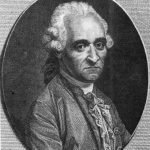
Antoine Court de Gébelin reinterpreted the deck as the lost Book of Thoth. This Book of Thoth, he supposed, must have been brought to Europe by the gypsies, who had been safeguarding it since it had been entrusted to them by Egyptian priests forced to encode and conceal their most precious secrets in a game to ensure their survival, as their libraries burned thousands of years ago.
Another version of this story says that the Book of Thoth was passed on to the Gnostics and then to the alchemists. Fascinating stories but, without any historical evidence.
Interestingly, Court de Gébelin in his “The Primeval World, Analyzed and Compared to the Modern World” (volume viii, 1781) associated the twenty-two tarot trumps with the twenty-two letters of the Hebrew alphabet and subsequently kabbalah, an association which was crucial to the development of the esoteric schemes.
Court de Gébelin’s ideas found a positive acceptance as the value of conventional religion was under dispute and there was room for new forms of spirituality.
The first evidence of cartomancy in France was in a book entitled “Etteilla, or a Way to Entertain Yourself With a Deck of Cards” in 1770 and a few years later with the book “How to Entertain Yourself With the Deck of Cards Called Tarot”, which was published in 1785, and was Etteilla’s respond to Court de Gébelin’s book of 1781.
Eteilla declared the Tarot to be the oldest book in the world, a work by Thoth. Furthermore, he believed that he was qualified to revise this document.
Among all, he reordered the cards believing that the supposedly original Egyptian order differed, with the proof being the relationship between the cards. Despite his views on his skills, the only thing he did was to append false meaning to a symbolism that had not been studied sufficiently deeply.
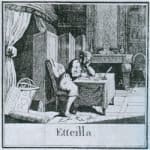
However, Etteilla succeeded to influence the later decks. The most apparent influences of Etteilla are:
- The inclusion of a divinatory meaning on the pip cards.
- The concept of how the cards related to each other and how they came together to form the whole.
- The concept of reading reversed cards.
- A new word to describe the art of card reading – cartomancy.
Towards the end of his life, Etteilla created a special deck for divination that syncretized his ideas with older forms of French cartomancy, the first deck of cards specifically designed for divinatory purposes.
Do you want to learn more about Tarot? Check out our recommendations at “Tarot Bookshelf” and many free resources at our “Free Tarot Library”
19th century
Main characters of this period were:
Eliphas Levi, (1810–1875), was a French occult author and ceremonial magician. When he published his first radical writing, “The Bible of Liberty” (1841), he was sentenced to eight months of imprisonment and a high fine.
He was perhaps the most important figure in the history of tarot in France and was largely responsible for the subsequent association of tarot with esotericism. His real name was “Alphonse Louis”, which transformed to “Eliphas Levi” in his attempt to translate it into the Hebrew language.
Joseph Paul Oswald Wirth (1860– 1943) was a Swiss occultist, artist, and author. He studied esotericism and symbolism and in 1889 he created the first occult tarot deck in history known as the “Arcanes du Tarot kabbalistique”.
It consisted only of the twenty-two major arcana cards, and while he followed the designs of the Tarot de Marseille closely, he introduced several alterations, incorporating extant occult symbolism into the cards.
Gérard Anaclet Vincent Encausse (1865 -1916), whose pseudonym was Papus, was the Spanish-born French physician, hypnotist, and popularizer of occultism, who founded the modern Martinist Order.
He studied medicine at the University of Paris and received his Doctor of Medicine degree in 1894. He spent a great deal of time at the Bibliothèque Nationale studying the Kabbalah, occult tarot, magic and alchemy, and the writings of Eliphas Lévi.
He joined the French Theosophical Society shortly after it was founded by Madame Blavatsky in 1884–1885, but he resigned soon after joining because he disliked the Society’s emphasis on Eastern occultism.
His odd name belonged to one of the genii to be found in a Greek theurgic tract known as the Nuctemeron of Apollonius. The genius “Papus” is said to rule the first hour of the day and, very suitable for Encausse, to personify the practice of medicine.
Samuel Liddell MacGregor Mathers (1854 – 1918), was a British occultist. He is well known as one of the founders of the Hermetic Order of the Golden Dawn.
He added the surname “MacGregor” as a claim to the Highland Scottish heritage, although there is little evidence of this in his family. He was a vegetarian, an outspoken anti-vivisectionist, and a non-smoker. He was interested in magick and the theory of war.
His first book was a translation of a French military manual. Mathers was multilingual, among the languages he had studied were English, French, Latin, Greek, Hebrew, Gaelic, and Coptic.
His translations of books like “The Book of Abramelin” (14thC.), “The Kabbalah Unveiled” (1684), “Key of Solomon” (anonymous 14thC.), “The Lesser Key of Solomon” (anonymous 17thC.), and the “Grimoire of Armadel” (17thC.), have significantly influenced the evolution of occultism and esotericism since their publication.
Apart from many supporters, he had many enemies and critics. One of his most notable enemies was his former friend and pupil Aleister Crowley.
During the French Occult Revival tarot became associated with esotericism, ritual magic, and divination. Éliphas Lévi and Gérard Encausse incorporated the tarot trumps into a complex system of correspondences, linking them to the zodiacal signs, the Hebrew alphabet, and all manner of esoteric schemes.
(Also read: The Best Tarot Books For All The Occult Students)
But there was no Tarot deck embodying this new complex symbolism.
Eliphas Levi set out the principles on which this work will be based, and Oswald Wirth completed it in 1889. It was the first occult tarot deck in history known as the “Arcanes du Tarot kabbalistique”.
It consisted only of the twenty-two major arcana cards, which reproduced the design of “Tarot of Marseilles”, with the symbolical modifications suggested by the researches of Eliphas Levi.
In the 19th century, the Egyptian origin of Tarot was still fascinating, but there was also the addition of Indian and astrological symbols and Hebrew letters.
Though Court de Gebelin had associated trumps with Hebrew letters, Eliphas Levi did it in a more specific manner.
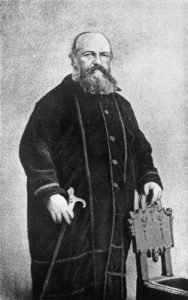
The Hebrew letters are categorized as:
- 3 mother letters, associated with the elements
- 7 double letters, associated with the planets
- 12 single letters, associated with the signs of the zodiac.
Éliphas Lévi, like Court de Gebelin, associated the tarot trumps with the letters of the Hebrew alphabet and hence with Kabbalah in an effort to disengage tarot from cartomancy. (As we have seen Etteilla had associated tarot cards with the Hermetic books.)
He expressed contempt for the practice of cartomancy, while he admitted tarot as a perfect instrument of divination. That’s because he believed that their most valuable purpose was not divination but the use of them as a means of acquiring wisdom.
Additionally, Tarot became part of ritual magic. According to the significant magic doctrine of correspondence, one thing can be used to influence another, based on their relationship to one another.
So, Tarot symbols working as the microcosm could affect change in the macrocosm. Hence, could be used to change or manipulate something else. In the opposite order, the macrocosm is reflected in the microcosm i.e the tarot symbols, and this way, tarot cards could be used as a divinatory device.
Lévi originally placed Justice in the eighth position and Strength in the eleventh. The Fool is placed below the Universe in the twenty-second or zero position.
Though Éliphas Lévi was the first to specifically associate the tarot trumps with the letters of the Hebrew alphabet, the Golden Dawn was the first to align correspondences between the pathways of the Tree of Life and the trumps.
Éliphas Lévi believed that Tarot had been known to all the nations of the ancient world. To associate the tarot with Kabbalah, its origin in a Jewish state was a necessity. But Jews were forbidden to use representational images due to the First Commandment. Instead, they could mark the cards with Hebrew letters or numbers.
Papus continued the Egyptian origin speculation, calling it the “Βook of Thoth Hermes Trismegistus” but also the “Βook of Adam, it is the book of the primitive Revelation of the ancient civilizations”.
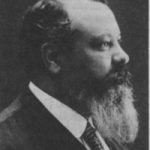
He applied three meanings to each trump:
- A Divine Meaning in the Divine World
- A Magic Astral meaning in the Human World
- A Physical meaning in the Natural World
Papus introduced new methods of laying the cards out for divination purposes and, also, argued that the minor arcana was just as important as the major arcana, a point which Waite agreed later. Perhaps his greatest service to the occult community and specifically to the occult tarot was the systematic analysis of Lévi’s work.
Like Levi, his work was syncretistic. His system of correspondences included Egyptian symbols and traditions, Kabbalah, astrology, and Hinduism. He died in 1916 from tuberculosis.
Victorian England
The next development in occult tarot took place in Victorian England.
In England, occultism was also gaining wide resonance. Initially, tarot played no part but it soon became a key element of this environment. This happened under the influence of a Rosicrucian society, the Hermetic Order of the Golden Dawn.
Golden Dawn was founded in 1888 and its rituals are described in the mysterious Cipher Manuscript. Incorporated into its teachings were most of the currents that constituted the occult worldview including Freemasonry, Egyptian magic, Hermeticism, Celtic Renaissance, and Christian mysticism.
All these traditions found expression in the tarot symbolism, but its correspondences of tarot trumps with the pathways of the Tree of Life would form the basis of most modern forms of divination interpretation.
It was used both as part of magical practice and as a divinatory device. Golden Dawn initiates believed that tarot could not only be used to foretell the future, it could also affect it, and were obliged to keep this knowledge secret.
Of course, this didn’t happen but instead forms the basis for the modern tarot interpretation. (Further reading: “Understanding the Esoteric Meaning of Major Arcana”)
Two members of the Golden Dawn order were to make an invaluable contribution to the evolution of the esoteric tarot.
Tarot achieved a prominent place in Golden Dawn due to the efforts of MacGregor Mathers, who added new information to tarot symbolism.
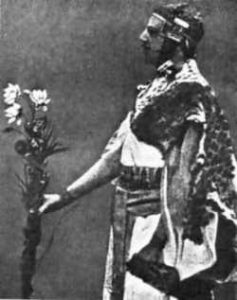
In the MacGregor Mathers system,
- Trump I, became “The Magician”
- Trump II, became “The High Priestess”
- Trump V, became “The Hierophant”
- Trump XXI, became “The Universe”
Additionally, Mathers renumbered the cards of Strength and Justice, originally swapped to better align them with their corresponding Hebrew letters. These names and numbering were used in almost all subsequent tarot decks.
Like Levi, Mathers aligned the name of God (Yod-He-Vau-He) to the court cards but went further, making the correspondences yet more complicated.
- He used the pathways between the sephiroth and astrological associations, to assign divinatory meanings to the cards.
- He associated the number cards (except the Aces) with the thirty-six decans of Egyptian astrology (four suits with nine cards each).
- He assigned the roles of the elements to the suit signs.
- The symbolism depicted on the court came from a diverse range of sources, from the Amazons and Scandinavian mythology to Greek deities.
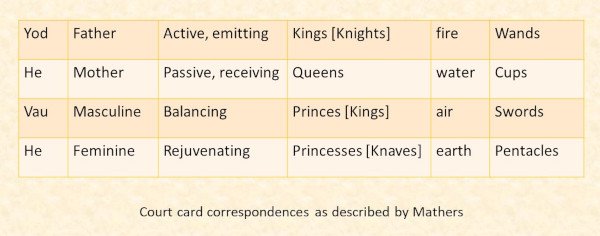
Golden Dawn was essentially a syncretistic system and this was reflected in the wide range of symbolism on the tarot.
The famous Irish poet William Butler Yeats, who joined the Hermetic Order of the Golden Dawn in 1890, was one of the first that link tarot with Celtic symbolism. Nowadays, there are many tarot decks with Celtic symbolism due to his idea.
At that point, there was no recollection that the tarot deck had once been used as playing cards.
Continue reading in the second part: Comprehensive Timeline of Tarot History – 20th century until today.
Do you want to learn more about Tarot? Check out our recommendations at “Tarot Bookshelf” and many free resources at our “Free Tarot Library”
Stay in Touch
 Join our newsletter by using the forms on this website or click here!
Join our newsletter by using the forms on this website or click here! Follow us on Google News
Follow us on Google News Follow us on Facebook
Follow us on Facebook
Featured Image By Pixabay.com
Bibliography
- Helen Farley “A cultural history of Tarot – From entertainment to esotericism” 2009 (aff.link)
- Papus “The Tarot of the Bohemians” 1896 (aff.link)
- Paul Huson “Mystical Origins of the Tarot: From Ancient Roots to Modern Usage” 2004 (aff.link)
- Arthur Edward Waite “The Pictorial Key To The Tarot” 1911 (aff.link)
- Chatto, “Facts and Speculations on the Origin and History of Playing Cards in Europe” 8vo. (aff.link)
- Aleister Crowley, “The Book of Thoth: A Short Essay on the Tarot of the Egyptians” 2011. (aff.link)

